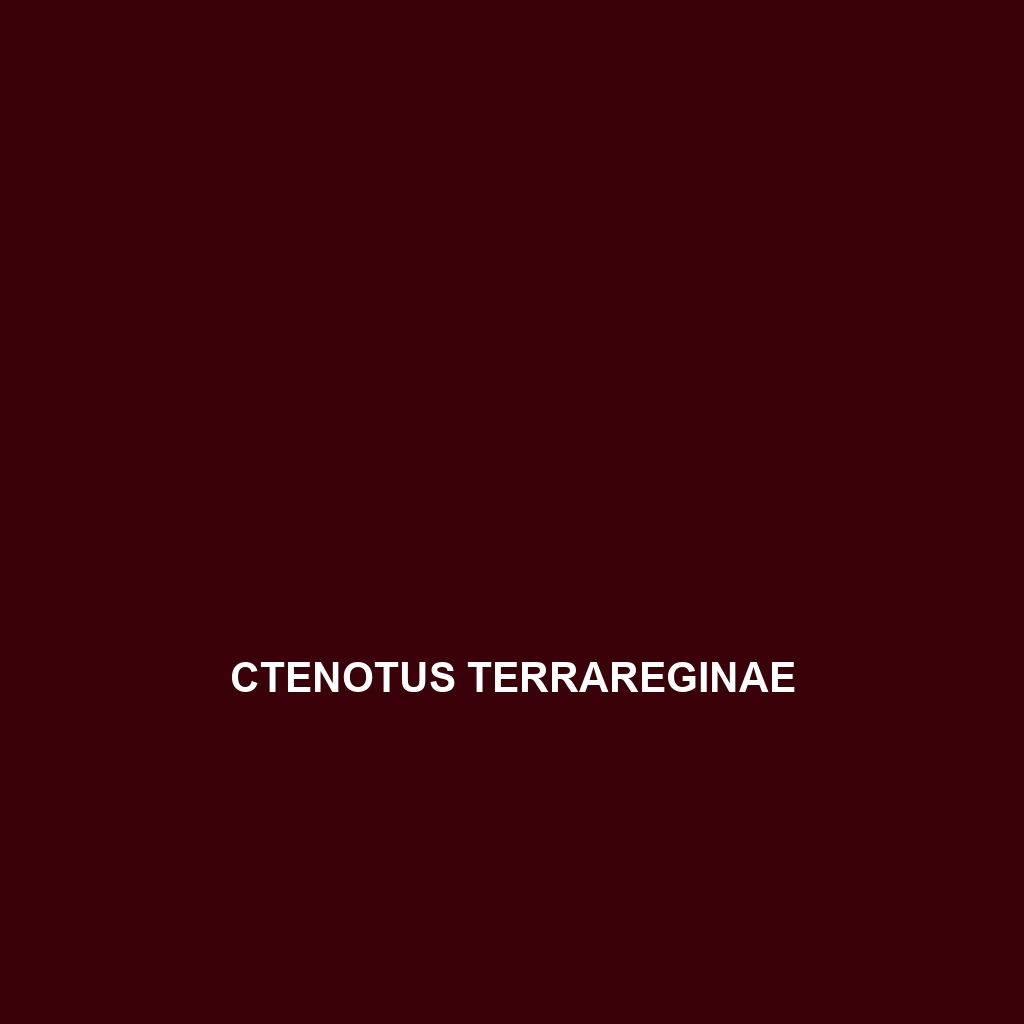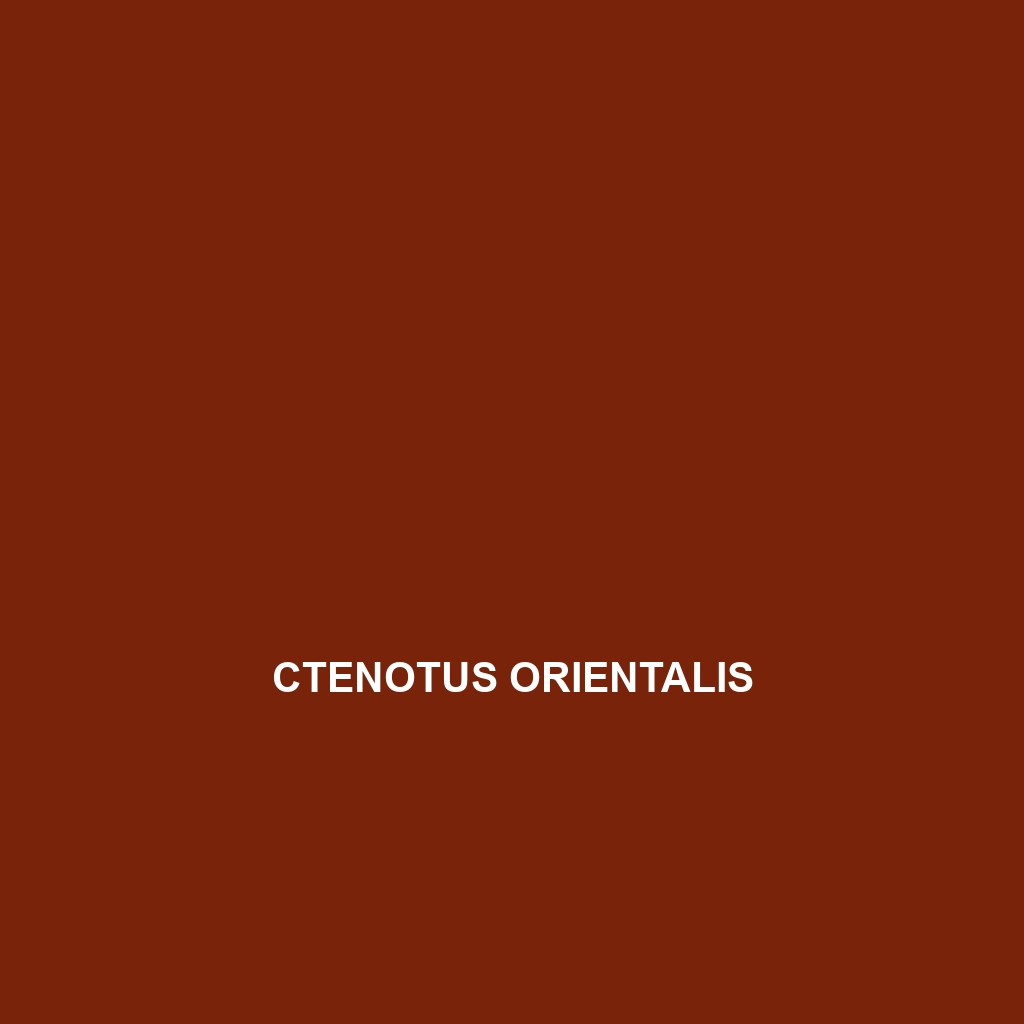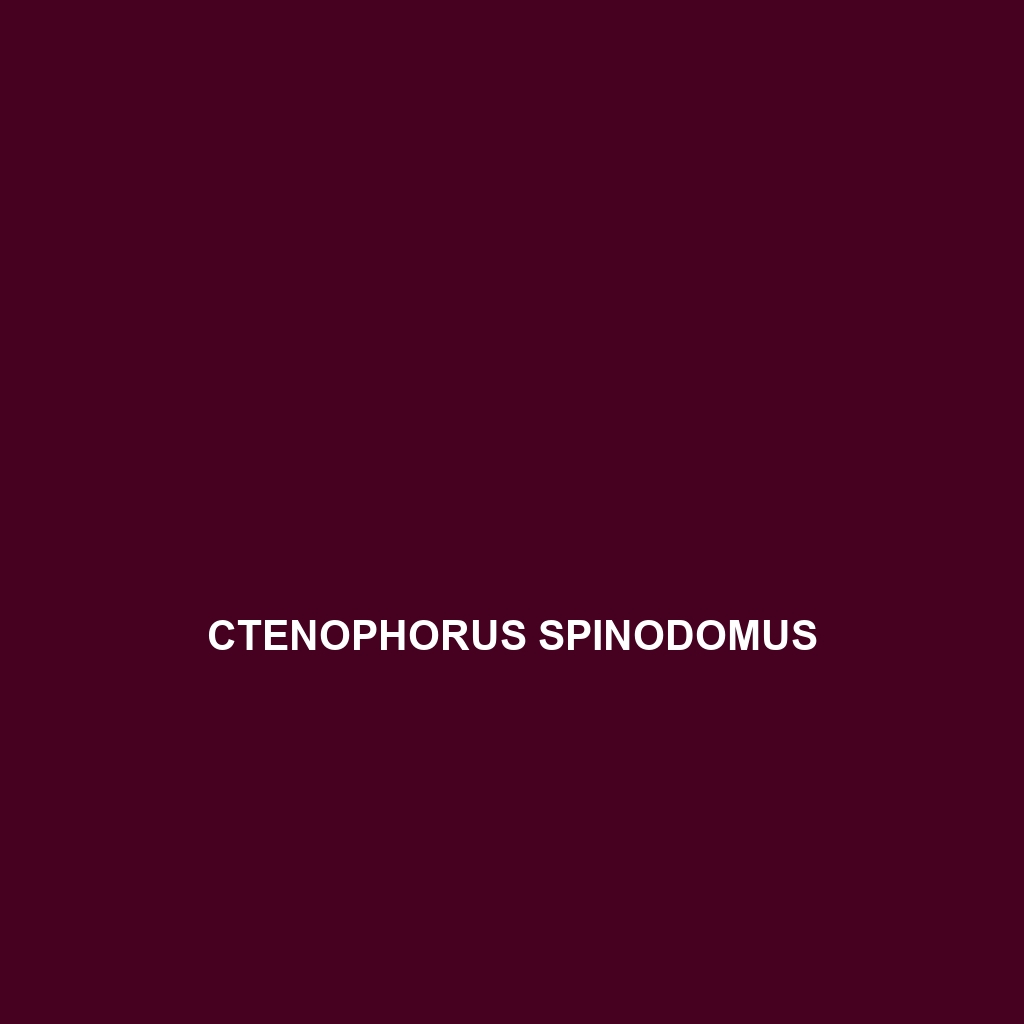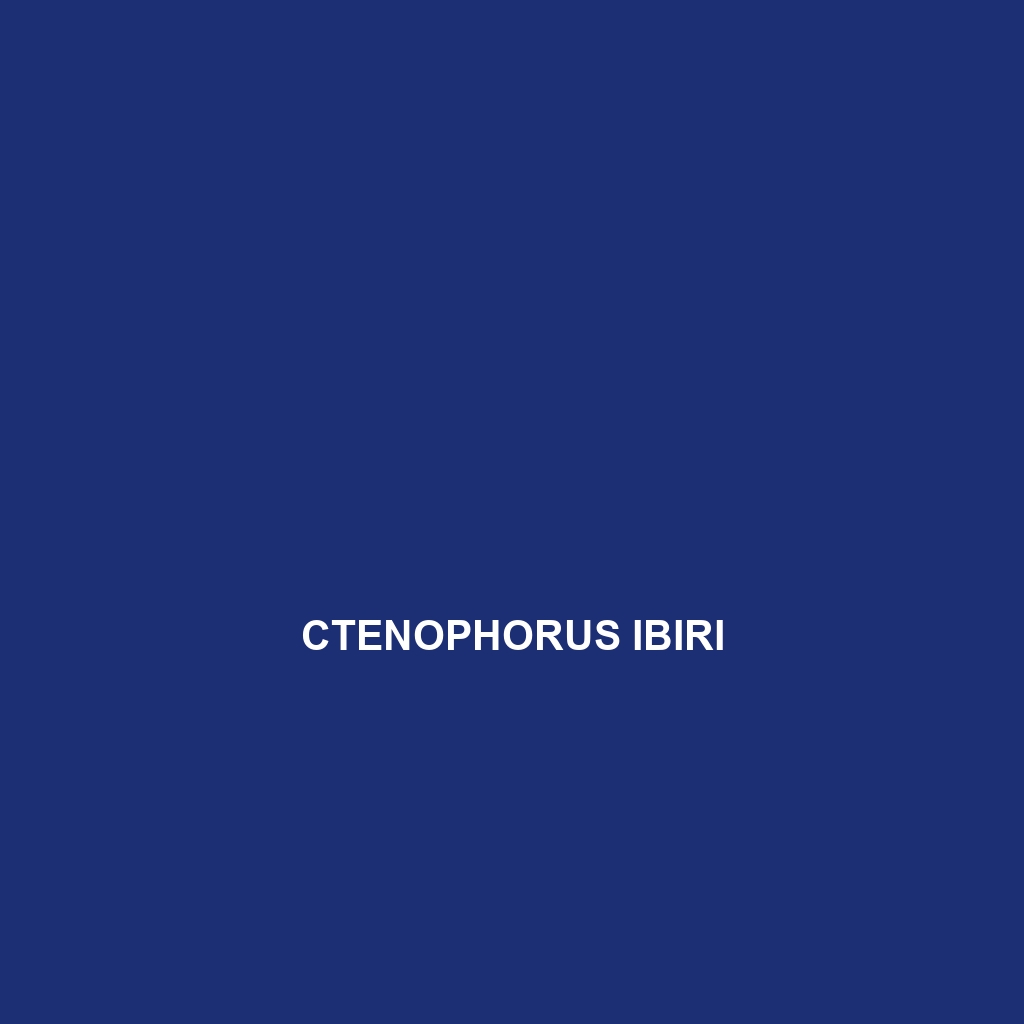Discover the Cynisca liberiensis, a vibrant rainforest species native to West Africa, known for its striking green body with black and yellow markings, agile behavior, and diverse diet of insects, fruits, and small invertebrates. Currently classified as vulnerable, this species plays a crucial role in its ecosystem through seed dispersal and population balance.</p>
Tag: insectivorous diet
Ctenotus terrareginae
Ctenotus terrareginae, a small skink native to Australia, thrives in arid regions and is known for its quick movements, distinctive brown or grey coloration with lighter stripes, and insectivorous diet. This resilient species plays a crucial role in its ecosystem by controlling pest populations and serves as prey for larger animals.
Ctenotus orientalis
Discover the Eastern Ctenotus (Ctenotus orientalis), a slender lizard native to southeastern Australia, thriving in scrublands and woodlands. With its distinct sandy brown and grey coloration, this diurnal species plays a vital role in controlling insect populations while showcasing fascinating behaviors and rapid growth rates.
Ctenotus eutaenius
Discover the Ctenotus eutaenius, a medium-sized lizard found in the dry sclerophyll forests of southeastern Australia. Known for its distinctive brown and grey scales, agile movements, and diet consisting mainly of insects, this fascinating species plays a vital role in its ecosystem.</p>
Ctenophorus spinodomus
Discover the Ctenophorus spinodomus, a fascinating Australian lizard known for its agile movements, distinctive spiny scales, and insectivorous diet. Thriving in rocky outcrops and grasslands, this species plays a vital role in its ecosystem by managing insect populations and serving as prey for larger animals.
Ctenophorus ibiri
Ctenophorus ibiri Discover the vibrant Ctenophorus ibiri, a diurnal lizard found in the arid woodlands and scrublands of southeastern Australia. With males displaying striking blue and green colors during breeding, they play a vital role in ecosystems by controlling insect populations and serving as prey for larger species.</p>
Cryptoblepharus novocaledonicus
The New Caledonian Skink (Cryptoblepharus novocaledonicus) is a vulnerable species native to the lush forests and coastal areas of New Caledonia, characterized by its agility, smooth scales, and ability to camouflage. This diurnal skink primarily preys on insects and plays a crucial role in its ecosystem by regulating insect populations while serving as prey for larger predators.
Cryptoblepharus aldabrae
Discover the unique Cryptoblepharus aldabrae, a vulnerable small skink endemic to the coastal regions of Aldabra Atoll, featuring a slender body with glossy scales and remarkable camouflage. This diurnal species plays a vital role in its ecosystem by controlling insect populations while serving as prey for various predators.
Crotaphytus dickersonae
Discover the unique Crotaphytus dickersonae, a medium-sized lizard native to the arid deserts of the southwestern United States, known for its striking color patterns and diurnal behavior. This fascinating species plays a vital role in its ecosystem by controlling insect populations and adapting to its challenging habitat.
Crotaphytus antiquus
Discover the ancient spiny lizard, Crotaphytus antiquus, a medium-sized, diurnal reptile found in arid regions of the southwestern U.S. and northern Mexico, known for its robust body, spiky dorsal crests, and insectivorous diet, playing a vital role in maintaining ecosystem balance.









